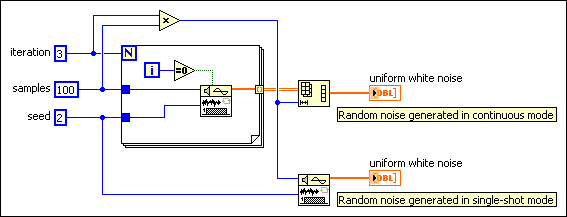Uniform White Noise VI
Owning Palette: Signal Generation VIs
Requires: Full Development System
Generates a uniformly distributed, pseudorandom pattern whose values are in the range [–a:a], where a is the absolute value of amplitude.

 Add to the block diagram Add to the block diagram |
 Find on the palette Find on the palette |






 , of the pseudorandom sequence:
, of the pseudorandom sequence:
